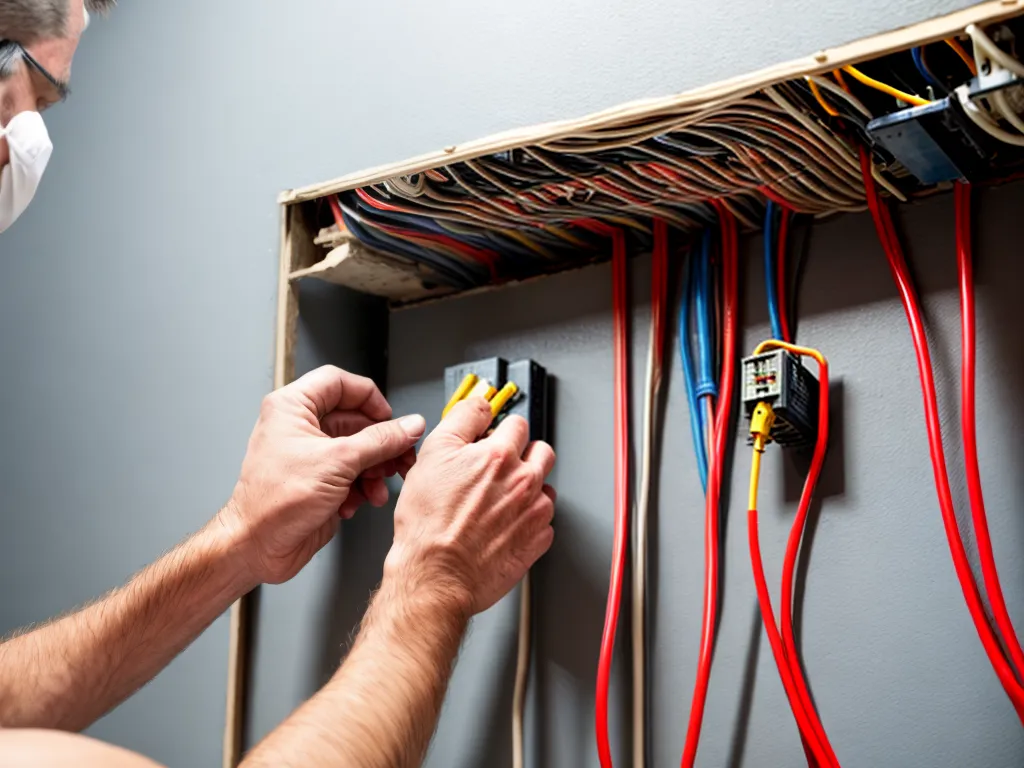
How to Safely Install Exposed Home Electrical Wiring
Introduction
Installing exposed electrical wiring in your home can provide a stylish, industrial look, but also comes with safety concerns if not done properly. As electricity can cause serious injury or death if mishandled, it's crucial to follow safety protocols and best practices when working with home electrical systems. In this guide, I will walk through the complete process to safely install exposed electrical wiring in your home.
Planning the Wiring Route
The first step is deciding where you want the exposed wiring to run. Some common options include:
- Along ceilings
- Inside walls with open panels or niches
- Under cabinet lighting
- Accent lighting on walls
When planning the route:
- Avoid high moisture areas like bathrooms or outdoors
- Keep away from water sources like sinks or sprinklers
- Allow sufficient access for installation and future maintenance
Also check:
- Local building codes for any restrictions on exposed wiring
- Clearances from insulation, ducts, and other mechanicals
Choosing the Right Electrical Wiring
For exposed installations, you'll want flexible, multi-strand THHN wiring. Key factors to consider:
- Wire gauge - Size for both circuit amperage and physical flexibility
- Strand count - More strands are better for bending without breakage
- Insulation rating - THHN is moisture/oil resistant and suitable for exposed runs
For lighting circuits, 12 or 14 gauge is commonly used. For 20 amp branch circuits, 10 gauge may be required. Select the minimum size needed for safety and capacity.
Installing Safety Boxes and Conduit
Wherever the exposed wires transition to connections or fixtures, install an appropriate electrical box or conduit body to house the splices or terminations.
- Use UL-listed metal boxes - never plastic
- Properly sized for # of wires and connections
- Attached securely along the run with appropriate distances
Between boxes, wiring can run through flexible metal conduit for protection. Secure conduit with appropriate hangers and fasteners following local code.
Running and Securing the Wires
When ready to install the wiring:
- Carefully pull conductors through conduit paths or structure openings
- Maintain proper polarity (hot, neutral, ground) throughout the run
- Use cable clamps or straps every 4-5 feet for support
- Leave six inches of slack at boxes for connections
- Avoid overtightening zip ties or staples - compressed wiring can damage insulation over time
Adhere to minimum bend radius and use wire lubricant to reduce friction when pulling.
Making Connections
When splicing or terminating exposed wires:
- Use listed wiring devices like receptacles or breakers
- Strip insulation properly using sharp wire strippers
- Wrap connections tightly with electrical tape or wire nuts
- Install wire ferrules if connecting to screws/lugs
- Torque properly - tight but not so much as to damage the wire
- Ensure at least 1/2" of bare conductor extends from connectors
- No loose strands - trim any overflow if present
Avoid electrical tape alone for splices - use friction wire connectors. Tape alone can loosen over time.
Labeling the Circuit
Properly label each circuit at the panel and any intermediate boxes:
- Circuit number - match panel schedule
- Voltage - 120V, 240V, etc
- Purpose - lights, receptacles, appliance
- Use durable printed or engraved labels
This helps ensure safety for future electrical work.
Testing and Turning On
Before activating the system:
- Double check all connections are tight and insulated
- Verify proper breaker size and fuse type
- Switch off breaker/fuse and test that power is off
- Inspect wiring thoroughly for any potential shorts or faults
- Energize the circuit and test with a multimeter to confirm correct operation
- Check function of connected fixtures or devices
- Consult an electrician if there are any concerns
When complete, your exposed wiring should provide stylish illumination while still meeting the highest safety standards. But take care - improper installations can be hazardous. Follow codes and best practices, and you can safely add this popular look to your home.